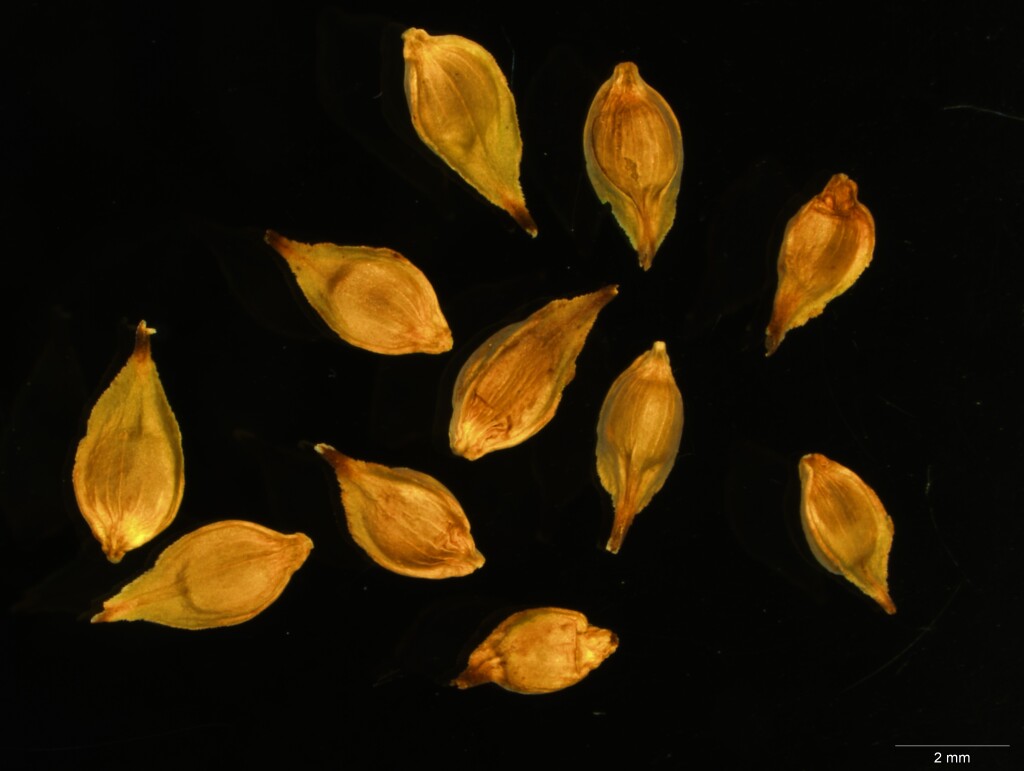Carex hebes
Nelmes Mountain SedgeRhizome short; shoots loosely tufted. Culms erect, trigonous to subterete, occasionally scabrous above, 4–20(–35) cm long, 0.7–1 mm diam. Leaves usually shorter than culms, 1–2.5 mm wide; sheath pale brown; ligule rounded. Inflorescence spreading, 0.5–1.2 cm long, with (2–)3–5 spikes solitary at nodes; lowest involucral bract exceeding inflorescence. Spikes sessile, contiguous, spreading at maturity, 0.5–1.1 cm long, always with female flowers above male flowers; glumes acute to obtuse, occasionally shortly mucronate, orange-brown, with usually broad white or hyaline margins; female glumes c. 3.5 mm long; utricles 3.2–4.5 mm long, 1.5–2 mm diam., ovoid to ellipsoid, weakly several-nerved, minutely hispid on slightly winged shoulders and beak, green to pale brown; beak 0.3–0.8 mm long, with apex shortly split or bifid; style 2-fid. Nut ellipsoid to obovoid, lenticular, yellow-brown. Flowers summer.
VRiv, EGU, HSF, HNF, HFE, VAlp. Also NSW. Rather common in alpine and subalpine grasslands and open shrublands, usually occupying drier sites than other high-altitude Carex species and sometimes colonizing disturbed ground.
Very close to C. raleighii (see notes under C. raleighii), from which it can be quite difficult to distinguish. Also superficially similar to C. divisa, but differs from that species in having a short rhizome, upper spikes always with female flowers above male flowers, and the utricles are weakly several-nerved.
Wilson, K.L. (1994). Cyperaceae. In: Walsh, N.G.; Entwisle, T.J., Flora of Victoria Vol. 2, Ferns and Allied Plants, Conifers and Monocotyledons, pp. 238–356. Inkata Press, Melbourne.
 Spinning
Spinning
